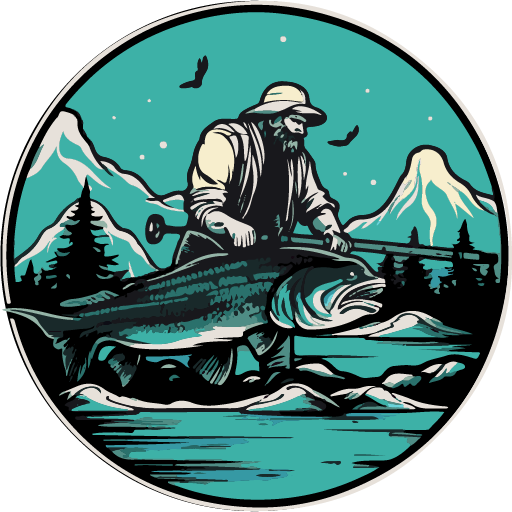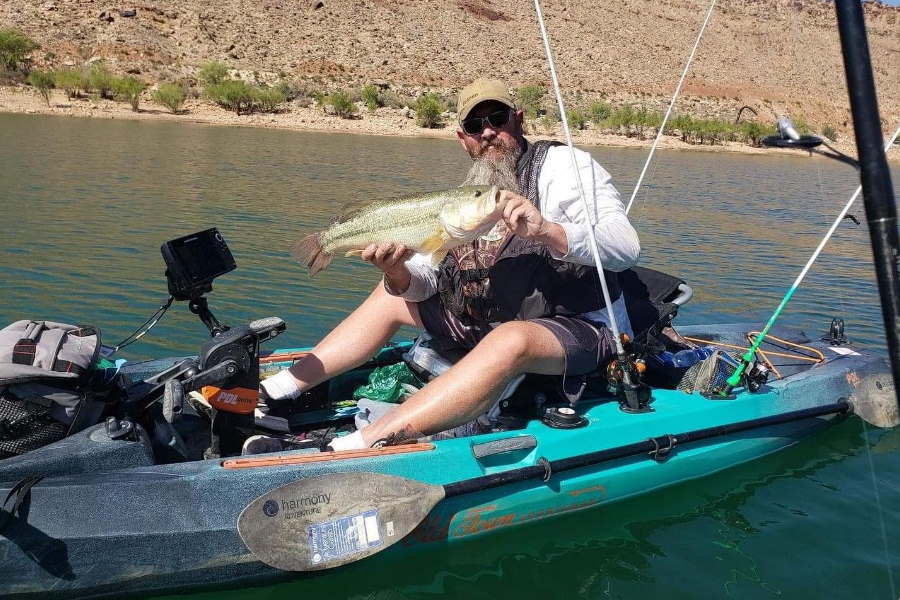All about Bass Fishing from a Kayak
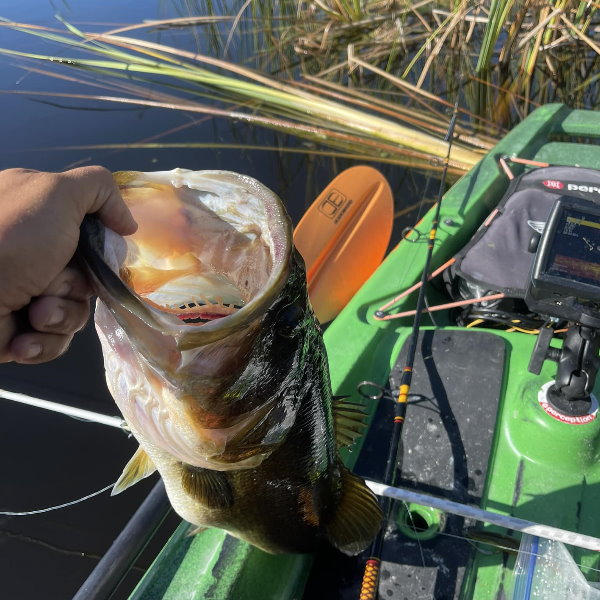
Kayaks are becoming a more popular way to fish due to their versatility. They can get you into tight spots where larger boats can’t go, and they’re quiet. For this reason, bass fishing from a kayak is becoming more and more popular because you can sneak up on bass
Today, we’ll provide an overview of the essentials you need to get started. We’ll also discuss the benefits and share some tips for becoming a successful bass fisherman.
So whether you’re a beginner or an experienced angler, read for some helpful advice on bass fishing from a kayak.
Keep reading to learn more!
Why Should You Try Bass Fishing from a Kayak?
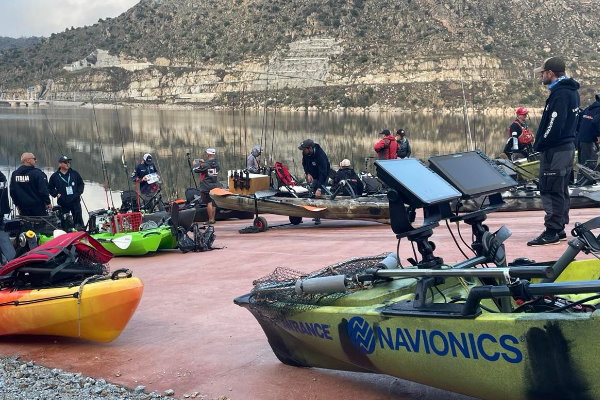
There are many reasons why kayak bass fishing is becoming more popular.
For starters, kayaks are much more versatile than traditional boats. They can get you into tight spots where the larger can’t go.
The next advantage is Financial Savings. The cost of kayak fishing is much cheaper than other bass boats. Not only about the price but also about the cost of repair, maintenance and operation.
Furthermore, it is stealthy. The sound of a trolling motor can scare away fish, but with a kayak, you can paddle quietly and sneak up on bass. Stealthy is also the key to success in fishing bass.
Additionally, it is much easier to transport. You don’t need a trailer or a truck to haul it around. You can only throw it in the back of your car and go. You can even take them on vacation with you!
Finally, fishing from a kayak is just plain fun. It’s a great way to enjoy the outdoors and get some exercise while you’re at it.
Now that we’ve discussed the benefits of bass fishing from a kayak. Let’s talk about some things you’ll need to get started.
What You’ll Need – Kayak Bass Fishing Gear
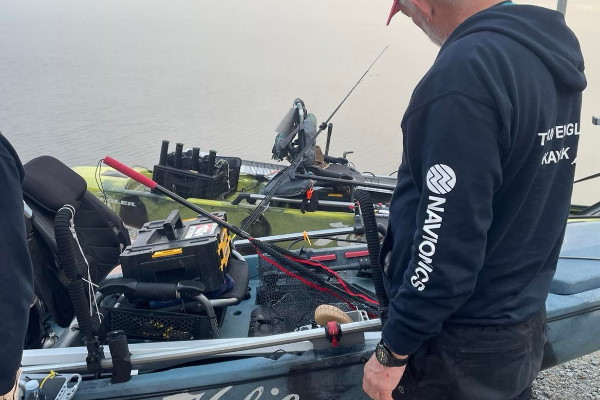
Many people who began fishing for bass a long time ago simply used a long stick, with some sort of line, tied to a hook, and normally used live bait.
Today, the sport of Kayak Bass Fishing has evolved, and the gear used is significantly more advanced. To get started bass fishing from a kayak, you’ll need some specialized equipment.
The first thing you’ll need, of course, is a kayak. Once you have a kayak, you’ll need some essential gear. These includes:
Rod/Reel:
You can use whatever type of equipment feels comfortable in your hands, but factor in size preference.
The best way to find what rod and reel combo is right for you, whether it’s finesse or power fishing with small lures on heavy lakes? It all depends!
For example, an ultralight fast action rod would work well when targeting small bass and panfish, while someone looking at catching the best bass might want something beefier. So they don’t break the line.
Rigging:
Unlike other types of fishing, where the options for rigs are nearly limitless, bass fishing from a kayak tends to be a bit more straightforward due to space constraints.
For this reason, many anglers prefer to use Texas-rigged soft plastics rigged on offset worm hooks; the most popular size is 3/0. Another option for those who want to fish a bit deeper is the Carolina rig, which uses a bead to help keep the lure down in the water column and a leader of about 18 inches – 3 feet.
Anchor:
When fishing from a kayak, it is essential to have an anchor on board in case you get stuck or want more stability while waiting.
If money isn’t an issue, I highly recommend getting a power pole or shallow water anchor that will hold your boat solid, so there’s no noise and less vibration for better stealthiness when trying out new spots!
For those who don’t have access to expensive gear, it’s still hope. A good $20 anchor should work well enough so long as it is deployed slowly over time.
Fish Finder:
A fish finder attachment on your kayak will help you locate bedrock, ledges, and other structures where they like hanging out during certain times of year- but not unexpectedly!
The best fish finders will not only show graphics of bass but also offer realistic images underwater so we can see any vegetation or rocks above the water.
You can attach a sonar unit with various methods ranging from overboard detection up front to outside each side deck.
It might be worth adding extra battery weight when using this high-power device because its output tone needs such a clear path to reach down and reflect up again, so any interference will reduce accuracy.
Nonfibrous net:
A net is a vital tool for landing fish, but it’s also essential to consider the type of net you use. Nylon nets can damage a fish’s slime coat leading to infection and even death. For this reason, it’s best to use a net made from nonfibrous material such as rubber or polyethylene.
Paddle:
Of course, you’ll need a paddle to propel your kayak. But not just any paddle will do. For kayak fishing, you’ll want a lightweight paddle and easy to maneuver. You’ll also want a paddle with a comfortable grip so you can fish all day without getting tired.
Some other necessary fishing gears are hook/weight, line, and pliers.
You may also want to invest in a fish finder or GPS to help you locate bass in your area.
Where to Go Kayak Fishing for Bass?
There are many famous fishing destinations in the U.S or over the world. Here we have 5 of our favorite destinations for bass fishing from a kayak:
Bull Shoals Lake, Arkansas/Missouri
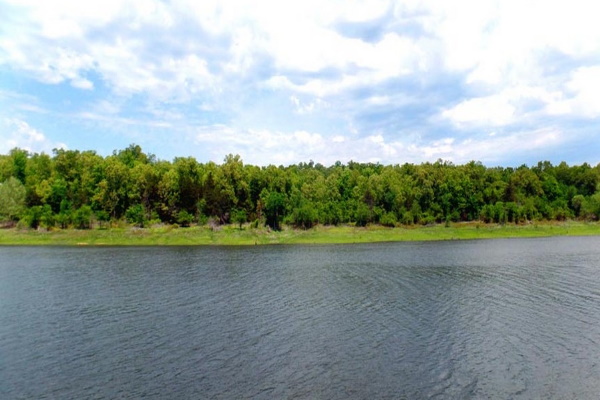
Near the borders of Arkansas and Missouri, Bull Shoals Lake is a great place to go if you are looking to catch largemouth bass or walleyes. The record number of floods means that this lake has high water and ideal conditions for fishing during spawn time!
Lake Fork, Texas
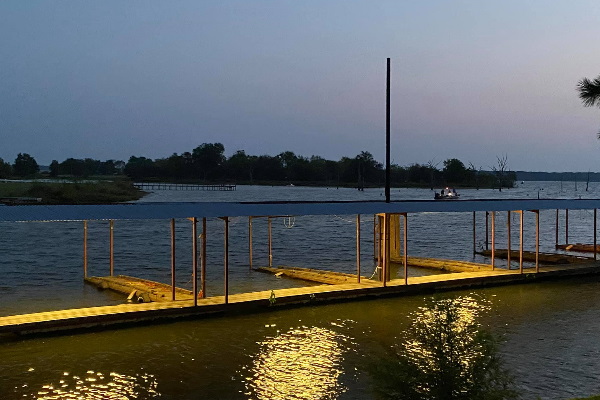
Few places come to mind more than The Lake Fork Lodge when someone thinks of great fishing spots in Texas.
It has a world-renowned bass fishing resort, recognized by Sports Afield Magazine as one of America’s Top 14 Sea Bass Lodges.
More than 65% percent of all Texas’s largest recorded fish and half those caught by the Toyota Share Lunker Program have come from this location!
Lake Okeechobee, Florida
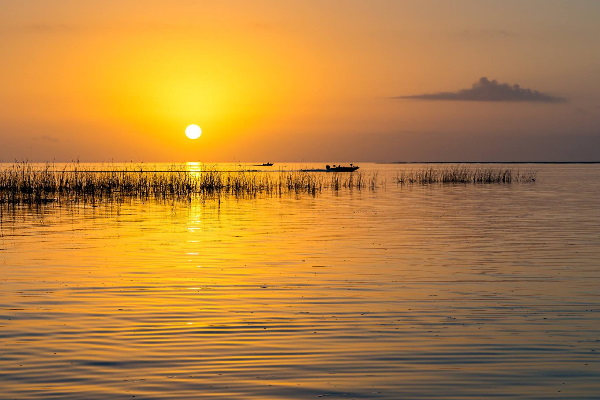
Lake Okeechobee is the second-largest lake in America, located in Florida’s south, and has been a hotspot for bass fishermen since your grandfather picked up his rod.
The wide shallow water means you’ll have to work on flipping and pitching techniques. If you want to succeed with this spot, be sure not only all parts of the body know what they’re doing when heading out there – but also practice beforehand!
There have been countless tournaments hosted by FLW, Major League Fishing (MLF), and Bassmaster events in this lake alone – not including other professional circuits such as Professional Hunter/Angler tourneys run through X-Act Olympic Games.
Clear Lake, California
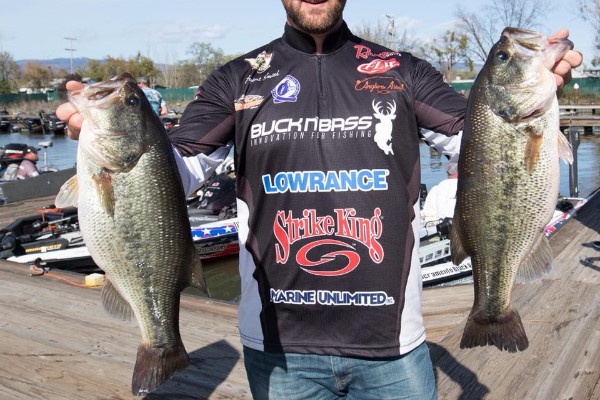
The stunning natural scenery and vast fish of this California freshwater lake have made it a popular destination for anglers.
Visitors can enjoy floating on their doubts during an unforgettable experience at what is sometimes called “the bass capital.”
Kissimmee Chain of Lakes, Florida
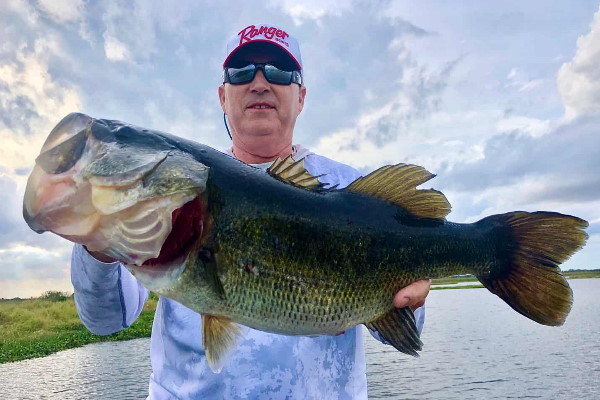
The Kissimmee Chain of Lakes, not far from Orlando’s theme parks, is a fisherman’s paradise.
You’ll find an ecosystem full of great waters, with more than two dozen interconnected lakes, which are home to many tournament catch records!
Plus, access is easy, and there are plenty of ramps available. So you can practice your technique before going out on those big ones when they bite best.
How to catch bass fish from a kayak?
Kayaks provide a unique and exciting way to fish for bass.
Kayaks provide a great way to get away from the crowds and fish in peace.
There are a few things to keep in mind when bass fishing from a kayak:
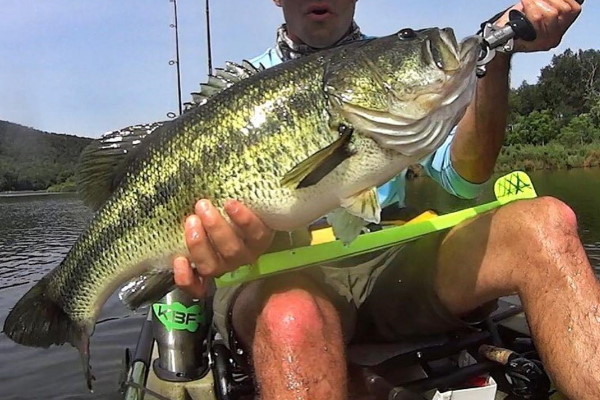
Find a hot spot
The first step to becoming a successful bass fisherman is to find the fish. Here are a few things to keep in mind when trying to locate bass:
Bass are ambush predators, which means they like to hide and wait for their prey to come to them. Look for areas with lots of covers, such as plants, logs, rocks, etc.
Bass are also attracted to areas with structural changes, such as drop-offs, points, and ledges. These changes provide bass with places to ambush their prey and refuge from predators too.
Bass are cold-blooded creatures, which means they are more active in warmer water temperatures. In the spring and summer, look for bass in shallow water near shore where the water is warmer. In the fall and winter, bass will move to deeper water where the temperatures are more consistent.
Bass are also attracted to baitfish. Look for areas where baitfish congregate, and you can find bass nearby.
Drop Anchor for Targeted Bass Fishing
When bass fishing, it’s better for drifting, but I know sometimes you want to lock yourself into one spot and drill down on the fishing hole before moving along. Locking into a place before moving along can be the difference between catching some good-sized suckers or going home empty-handed!
For this tactic, we’ll need an anchor. Drop it on promising weed patches or beds having fish running through them.
You can ensure to cover all the water by fan casting and try different baits, such as swimbaits or salamanders. If fishing for bass in springtime when they first start emerging from their nests on trees- harass them with these lures repeatedly until one bite!
Casting May Maneuver Kayak Around
The slightest motion of a kayak can change its direction, even if you are only casting lures.
Casts will cause your kayak to shift bearings, but this can use as an advantage, figure out what way the boat angles when you cast and compensate for that direction. The added stability from lining up better against bait helps make hooksets much stronger.
Fight bass fish from a kayak
When you have a fish on the line, there are a few things to keep in mind:
First, use your paddle to stabilize the kayak. It will help keep your balance and give you more leverage when fighting the fish.
Second, use your body weight to your advantage. Lean back when fighting the fish. It will help you stay in control and tire the fish out faster.
Finally, keep your arms and hands close to your body. It will help you maintain control of the rod and prevent line breaks.
By following these tips, you’ll be able to succeed in fighting and landing bass from a kayak.
What lure to use for bass fish?
It’s not uncommon for die-hard anglers to tell you that artificial lures are the only way of chasing gamefish.
Today, many newcomers enjoy success with both natural bait and topwater frogs.
Try several varieties before deciding which ones fit best based on their actions alone because we all know nobody wants another “wrong” lure in the bag!
Spinnerbait
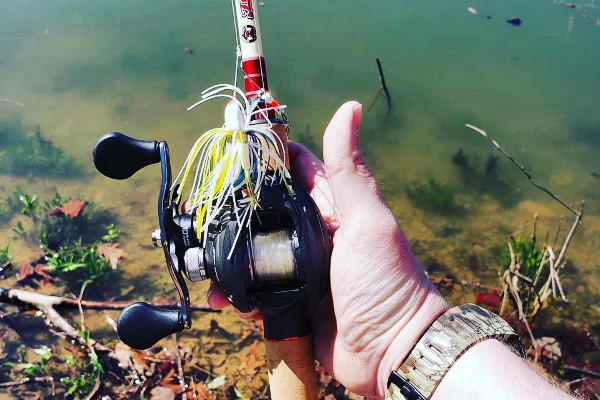
The spinnerbait is an excellent search lure for bass because it’s horizontally presented and suits the low-to-water seated position that kayakers take.
When you’re out bass fishing from a kayak, there are a lot of different situations that could arise. You may need to cover lots of water quickly or find those hard-to-reach spots.
One way to handle these challenges is by using spinnerbaits. They make great search lures and can be fished through most conditions with little effort due to their weedless design and ability to catch fish quickly, even when covered in thick vegetation!
It has one exception: heavy cover, which makes casting difficult due to its weight (or lack thereof). To combat this problem, I’ll bulge my bait on top or slowly roll it over deep weeds; both techniques work equally well because bass can’t see what kind of gear they hit before feeling those sharp teeth sink into their lip!
I recommend this type of bait over others because it excels under almost all circumstances, making them perfect during any hunt or fishing adventure where space might become limited, like in a kayak.
Topwater frogs
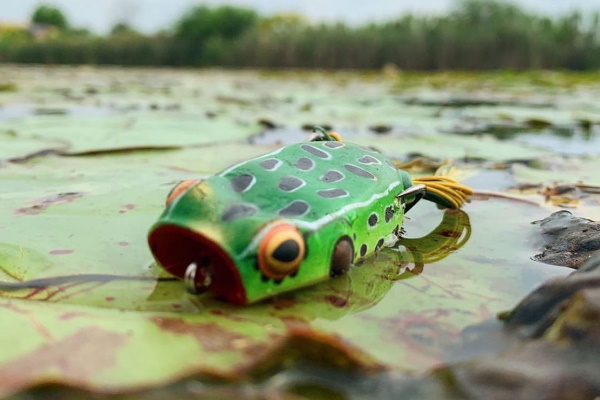
One of the secrets to catching largemouth bass is using topwater frogs. Kayaks let you get right into this cover, and thick slop or weeds will wrap around paddles making maneuverability more difficult than in open water. But it’s worth every second for that shot at an impressive fish!
When we were able to slip into shallow waters where stealth became necessary, keeping the noise down, plus avoiding spooking too many strikes by casting out just enough line, so they capably grab onto whatever was near instead.
When fishing for bass, always be prepared to strike at any time. It is especially true when you are using topwater lures. Commonly, they’ll hit just a few feet away from your kayak!
For frogs, I prefer heavier power baitcasting reels paired with 7:1 gear ratios so my largemouth can quickly get pulled up and out of thick cover in open waters where weeds aren’t an issue (or shouldn’t pose as much danger).
I also like throwing hollow-bodied frog hooks during periods when there isn’t much current. This way, we only need one piece instead of two if wading or floating around.
Softbaits
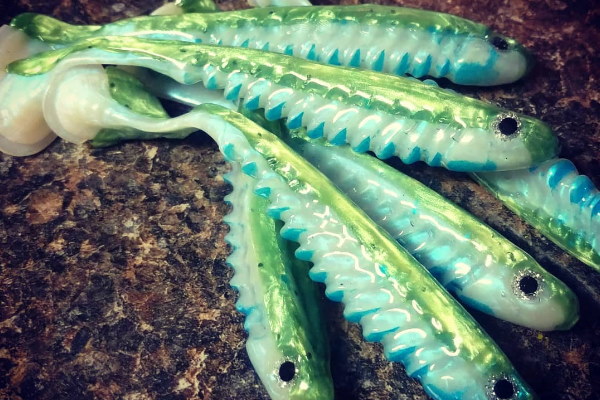
Softbaits are a great way to catch lots of largemouths, and there’s no reason you can’t fish them out on the water.
In light winds or when drifting through grasses with your crawl reel spooled down low, so it doesn’t kick up too much chop while hitching a cast from time to time as needed for activity – grubs work best in these conditions.
Tube jigs do well during periods where bait is easy to get tired (swim baiting).
You will see things stay calm, but they will be tough when Texas rigger-style soft jerk Baits come into their own because they have the potential plus fight!
Tips And Tricks for Successful Bass Fishing from a Kayak
Dunk Weed Pockets
Hooking bass in weeds is not easy, but it can be done.
Bass love holding tight and deep within the tall green plants blanketing every river bank. Sometimes you need to pick apart an area for them by using short-line flipping or pitching jigs into their pockets so they’ll come out Swimming!
Anglers should keep their lure in the forward position of the boat and not off to either side when fishing this way.
Then when you set your hook, it will follow along with how far down into those waters go, which makes for more stable catches than if it were sitting back without any input on where exactly we want our bait or line going. So that’s something else worth thinking about before getting out there!
Vertical presentations can be an attempt when sitting in the kayak, but it is possible to stand up and fish. The good news for anglers who want more stability while they’re out there on their rivers, lakes, or streams? Many of today’s fishing kayaks are stable enough, so you don’t have trouble standing upright!
Being Low is a Good Thing
Kayaks are great for low-position fishing because they provide a proper skipping bait in cover.
You can cast your line from the side-arm cast with some rods, keep your bait low to the water and toss it under shaded coverage areas like docks or trees.
Top skipping lures include tubes of various weights with soft jerk baits attached; they’re perfect for catching fish that are hard to get near enough without spooking them too much!
Don’t overload the kayak
Bass fishing from a kayak can be a lot of fun, but it’s not worth the hassle if you don’t take care in advance.
One way to do this is by deciding what type or style bass rod and reel will work best for your needs ahead of time according to season/weather conditions where ever they may occur during travel plans.
Remember there shouldn’t be more than 2 rods (preferably one light enough) plus any boxes containing lures which are essential lighter-weight equipment.
Such as those used for Texas rig or drop-shotting set-ups that are less likely to get tangled when trying to move around inside a kayak – explicitly, if it’s a smaller model!
Also, be sure not to bring too much food and drinks because space is limited on these vessels, so it’s best to pack light snacks like granola bars that won’t be easy to spoil in the heat.
Close to the shoreline
When fishing from a kayak, it is best to find shallow water near the shoreline where bass tends to stay close.
Shallow waters are safer and more accessible than open bodies of water, which can be dangerous even if you’re wearing a life jacket!
If your objective requires deeper depths for catching gamefish like bream or crappie, consider bringing along another fisherman with enhanced sonar technology. So they may help locate these elusive creatures while both parties entail some time searching out new spots where fish may be hiding!
Some kayaks have specific features like storage compartments that come in handy for holding tackle, but it’s also a good idea to bring along a small dry bag.
So you can keep your phone, wallet, and other valuables safe and dry while you’re on the water.
Accept the New State of Stable
Fishing from kayaks is an exciting and new way to fish, but there are a few things that you need to know.
One of those secrets? Your stability might not always be perfect while out on the water. It means accepting a little more risk than before when setting your hook or fighting bass with only one hand (or foot!).
Though, there’s nothing wrong. Instead, focus on getting better at casting ahead. So as long as we ensure our lines don’t get tangled up too poorly, everything should go smoothly!
Angle your kayak for the hookset
For bass fishing, it’s important to angle your kayak so that if you hook a fish and start spinning them in circles, you will feel most comfortable staying put.
If not, there are probably some serious stability issues with the boat itself or how we’re holding onto our line, which could lead to capsizing at any given time, whether left-handed (capsize) backward through rightwards turns!
Avoid Spooking Bass
Bass are usually very fussy. When you’re out on the water, ensure that your kayak is as quiet as possible; so it doesn’t spook any fish – even dropping one hook in could be enough!
Be patient; stealth will win over speed every time unless we want our lines pulled up immediately by wary gamefish who have learned their patterns well from years of experience in the same waters.
The Best Time to Fish for Bass
Best time of the day
Morning
The light at dawn is poor, but bass can see better than their prey. This time allows them to take advantage of this time and look for food, which increases the chances they will strike a lure when fishing during warmer summer months.
There’s also evidence that shad move into shallows to spawn early morning, and that’s where bass will follow.
Late Afternoon/Evenings
When the temperature drops during the late afternoon and evening hours, this could mean that bass will come back into shallow waters to find food because they were too warm during mid-day hours. However, if you’re winterized with cold water temperatures, make sure that your target audience is at their coziest point throughout these changeable months – which might only happen mid-afternoon when waters have had plenty of opportunity to warmer!
Night
If you want to catch bass at night, use lures that chirp and buzz, as they can not see well enough in low-light conditions. The noisier, the better, as far as attracting their attention goes- especially if it’s something like a spinner bait or popping noise from your rod tip!
The bass may feed at night during summer because it is usually colder, and they can find plenty of prey near the surface. You’ll also notice them closer to shore in winter, as this period typically has warmer water that attracts more baitfish than other seasons.
Different Times Of The Year For Bass Fishing
Spring
Bass fishing from a kayak can be a great sport throughout the year, but it’s exceptionally stimulating during springtime. The bass will often feed more actively before going into their pre-spawn phase. When determining what time of year this event occurs is not set in stone and could happen at any point from late winter through early summer.
You may find these beautiful fish in shallow water as they prepare for breeding. Or you might discover them deeper depending on water temperature levels.
Remember that even if there isn’t an active bite right now – don’t give up hope!
The best time of year to fish for bass from a kayak is spring and fall when the water temperature is cool, and the fish are more active. In the summer, the bass will be deeper down in the water and harder to catch.
Summer
The location of bass during the summer will often depend on various factors like water temperature. Still, if you’re looking for where they might be found in your area, you should keep an eye out near vegetation and deeper waters.
Bass may still feed near shallows even though this is not their usual feeding ground because there are usually plenty more baitfish here too!
Fall
The time of year when the bass is feeding heavily is a perfect opportunity for anglers looking to reel them in. As fall traditionally brings an increase in movement and activity, is a great time for bass fishing.
This means you’ll find them in migratory routes and shallow flats around structures where their bait can move up and down with water currents while also being fed by any prey that happens upon it!
Topwater lures can still work as well, or just make sure you’re using something like crankbaits or jerk baits instead.
Winter
In winter, the bass may slow down their metabolism so they can feed less while conserving energy and it can take a lot of patience to catch them.
But if you slow down your presentation when fishing during this period then small temperature increases could cause these fish to move into shallows where they will feed.
The bass is generally found in deeper water, but they can move up near the surface to feed. However as a result of where you’re located geographically may dictate when these fish will be preparing for their annual spawn and migratory patterns change accordingly- some might even start prepping early based on winter conditions!
In short, spring is the best time to go bass fishing, then fall, summer ranks third, you have to be mentally prepared not to fish as much as in spring and fall. Last ranked is winter, it’s not a good time to go bass fishing.
Safety Tips
Wear a life jacket
Even if you’re a strong swimmer, it’s always best to wear a life jacket when kayak fishing. If you’re going to be fishing in deeper waters or farther from shore, make sure to bring along a personal flotation device (PFD) just in case!
In addition, most states require that all boaters must wear a life jacket while on the water. So if you’re planning on bass fishing from your kayak, make sure to have a PFD with you at all times.
Check the weather forecast
Before heading out for a day of kayak fishing, always check the weather forecast. If there’s a chance of thunderstorms or high winds, it’s best to stay off the water.
In addition to checking the weather forecast, always be aware of your surroundings while on the water. If you see dark clouds or hear thunder in the distance, it’s best to head back to shore immediately.
Know your limits
When kayak fishing, it’s important to know your limits.
Bass fishing from a kayak in shallow water is ok, but always keep in mind that never kayak fishing alone in areas that are more than 8 feet deep.
Additionally, always fish with a partner if possible. That way, if one of you gets into trouble, there’s someone there to help out.
Bring along a safety kit
Just like when you’re hiking or camping, it’s always a good idea to bring along a safety kit when fishing.
Your safety kit should include items like a first-aid kit, a flashlight, a whistle, and a map of the area.
By following these safety tips, you’ll be sure to have a fun and safe day out on the water!
Conclusion
Bass fishing from a kayak can be an enriching experience, especially when you catch that big one. With the right gear and some tips and tricks, you’ll be on your way to bass fishing success in no time. Remember to always fish safely and have a great time on the water! Have you tried kayak bass fishing before? What was your experience like? Share with us in the comments below.
Thanks for reading our article. If you have any questions, leave a comment below. You can see more posts on our website here.
Further reading:
How to Store a Kayak Without Damaging the Hull
